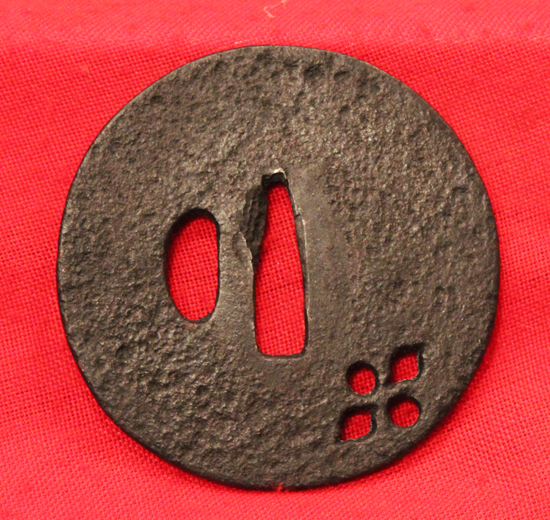Ko Tosho School Swordsmith Made Koto Katana Tsuba Circa 1400
The strong, softly lustrous metal and very well cut, the large Hitsu-ana, and the antique chisel marks around the Hitsu-ana are all characteristic indications of early-Muromachi period works. Carved openwork clan mon. The Hitsu-ana, made when the guard was first produced, suggests that it is a work of the time of Yoshimitsu. A well worked and hammered plate. According to tradition, it says each time a Tosho made a to-ken, he made a habaki with his own hands, and at the same time he also added a single tsuba such as this.
The earliest Tosho tsuba are referred to in Japanese as Ko-Tosho old sword smith and date from the Genpei War (1180-1185) to middle Muromachi Period (1400-1500).
During the late Kamakura Period large Ko-Tosho tsuba were developed and were used mostly as field mounts for odachi by high-ranking Samurai during and after the Mongol invasion of Japan in Genko Jidai (1274-1281 ) in the Muromachi Period (1336-1573) the Ko-Tosho tsuba became even more common with the development and popularization of the onehanded sword uchigatana as the only sword of Ashigaru.
The most common design characteristic, next to the plain flat plate, for Ko-Tosho tsuba is kosukashi the simplistic use of small negative silhouetted openwork. The most common openwork designs are of mon (family crest), sun, moon, tools, plants, Buddhist, Shinto and sometimes Christian religious symbols. The plates iron is characteristically of a good temper, having good hardness and elasticity. The plate is made of local iron forged by the swordsmith or apprentice, the same as for Japanese sword blades. 74mm
Code: 19741
750.00 GBP


